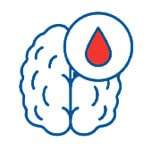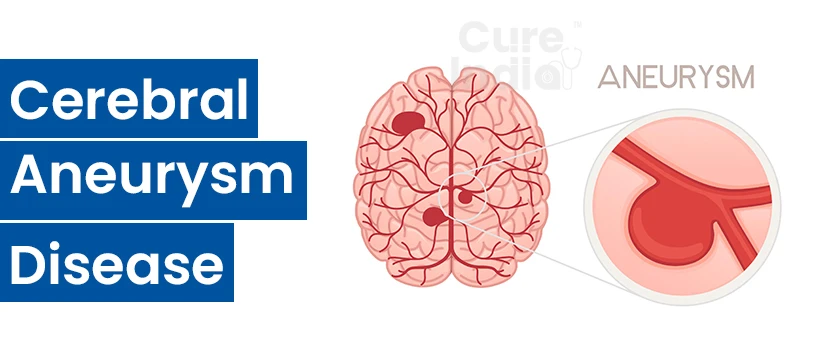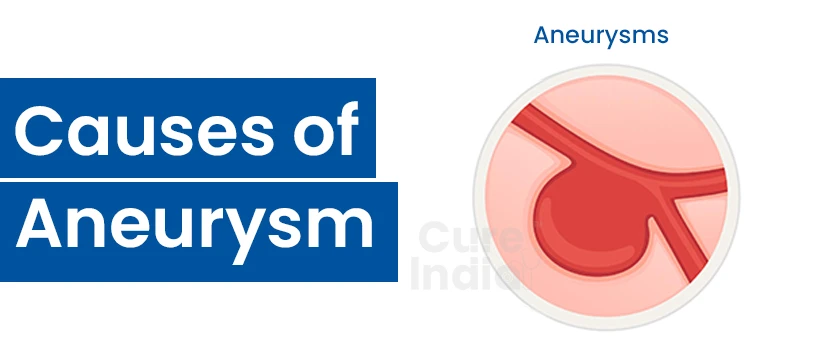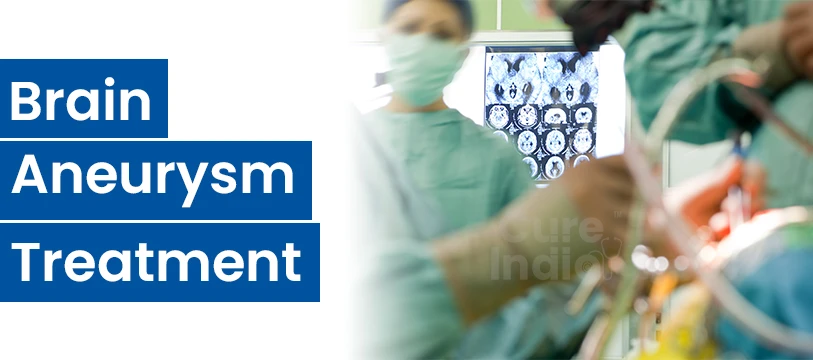

Brain aneurysms are a common and benign condition that cause a sudden burst of bleeding in the brain. They can occur anywhere in the brain and can be caused by a range of factors, including trauma, genetic disorders, or high blood pressure. However, there are many warning signs that you may have a brain aneurysm. The most common warning signs being a headache, nosebleed, vomiting, vision problems, and dizziness. If you have any of these symptoms, you should consult a doctor immediately.
But, despite being diagnosed, African patients find it hard to access quality brain aneurysm treatments due to limited access to specialised neurosurgeries, high costs, and long waiting times. This has led to the rise in medical tourism, especially for brain aneurysm treatments, to countries like India. India is one of the most preferred countries for neuro treatments, owing to its internationally accredited doctors and hospitals, advanced technology and state-of-the-art infrastructure. Therefore if you’re considering undergoing brain aneurysm treatment in India, this page will be your guide to everything you need to know about the procedure.
Aneurysm disease is an abnormally dilated and weak blood vessel that can occur anywhere in the body. The main risk factors for aneurysm disease are smoking, high blood pressure, and family history. Some of the symptoms of aneurysm disease include headaches, neck pain, vision problems, and weakness in one side of the body.
Aneurysm disease is a type of brain aneurysm that can lead to a stroke. This condition is often referred to as a ruptured brain aneurysm, meaning that the aneurysm has burst and is leaking blood into the brain. A brain aneurysm can be caused by anything from a genetic predisposition to a blow to the head. Brain aneurysms are often life-threatening and require immediate medical attention.

A cerebral aneurysm is a bulge in the wall of a blood vessel in the brain. It is more commonly known as a brain aneurysm. A cerebral aneurysm is a life-threatening condition and can cause bleeding and swelling in the brain. The patient may need surgery to remove the aneurysm. The risk of an aneurysm forming is increased with smoking, hypertension, and high cholesterol.
A cerebral aneurysm is a bulge in the wall of a blood vessel in the brain. It can be a small bulge or a large bulge. They are typically found on the inside of the blood vessel. They are often caused by a weakening of the blood vessel wall, which can be caused by high blood pressure, high cholesterol, smoking, or by a tumor on the blood vessel. If the bulge is small and does not cause any symptoms, it is often left alone. If the bulge is large and causes symptoms, it can be treated with surgery or with medicines.
Cerebral aneurysms are rare but life-threatening brain conditions that occur when a bulge or balloon forms in the wall of an artery, most commonly the carotid artery in the neck. When these aneurysms become large enough, they can cause a stroke. The risk of having a cerebral aneurysm is increased by atherosclerosis, hypertension, and other medical conditions such as diabetes and high cholesterol.
An aneurysm is a balloon-like bulge or pouch of blood-filled, thin-walled, fragile tissue that forms in a blood vessel, usually the arteries of the brain or the heart. If a blood vessel near the brain ruptures or bursts, it can cause an aneurysm to form. The rupture of the vessel is caused by a buildup of pressure in the vessel, which is often due to a weakening of the wall of the vessel. If the pressure builds up too much, the vessel may rupture and cause a stroke.

There are many causes of aneurysms, but the two most common are cerebral and aortic. Cerebral aneurysms usually form as a result of brain trauma or due to the weakening of a blood vessel in the brain. Aortic aneurysms, on the other hand, are typically caused by weakened blood vessels in the heart. In either case, aneurysms are not always benign and can be life-threatening.
An aneurysm is an abnormal bulge in a blood vessel. It can be caused by a buildup of pressure that builds up in the vessel. An aneurysm can also form if a blood vessel is damaged or is weakened. Sometimes a blood vessel can rupture and leak, causing it to swell. There are different types of aneurysms, including cerebral aneurysms, which occur in the brain, and arterial aneurysms, which occur in the arteries.
An aneurysm is a bulge in the wall of a blood vessel, usually in the brain or heart. Symptoms of an aneurysm vary depending on where it is located and how large it is. It is important to see a doctor immediately if you experience any of these symptoms to avoid further complications.
Aneurysms are small bulges in a blood vessel that can occur anywhere in the body. When these aneurysms are large enough, they can burst and cause a deadly stroke. The symptoms of an aneurysm can vary depending on the location and size of the aneurysm. In general, people who have experienced an aneurysm may experience:

Brain aneurysms are an abnormal swelling of the brain's protective lining that is caused by a weakened blood vessel in the brain. They can occur in any part of the brain, but they most commonly occur in the frontal lobe, which is responsible for controlling personality, emotion, and movement. When a brain aneurysm forms, it can cause a stroke if it ruptures. A ruptured aneurysm will cause bleeding into the brain and can lead to death or permanent disability. Luckily, there are many ways to treat a brain aneurysm. These treatments include medication, surgery, and endovascular coiling.
Brain aneurysms are the result of a bulge in a blood vessel wall that causes a buildup of pressure. Symptoms of brain aneurysms include headaches, dizziness, vision problems, and difficulty speaking. If your doctor finds that you have an aneurysm, they will likely recommend surgery to remove it. The surgery is fairly simple and doesn't take too long to recover from. However, there are some risks involved with the surgery. Patients who have had brain aneurysms may experience seizures or bleed in the brain. The brain aneurysm treatment options in India include:

Brain aneurysm surgery is the procedure to treat the bulging of blood vessels in the brain. CureIndia can help you select the most experienced and specialised doctors for your brain aneurysm treatment in India. The neurosurgeons with CureIndia are greatly experienced and specialists in their respective fields. Let's hear from some of the best doctors for brain aneurysm treatment in India:
Dr. Aditya Gupta is a top-rated neurosurgeon in India, known for his proficiency in treating brain aneurysms and other vascular disorders using the latest microsurgical and endovascular techniques. With experience spanning over 32 years, he has established himself as a leading expert in neurovascular surgery in India. He is currently the chairperson of the Neurosurgery department at Artemis Hospitals, Gurgaon.

Dr. Rana Patir is a leading neurosurgeon in India with extensive experience of over 32 years in performing complex brain aneurysm and cerebrovascular surgeries. Known for his expertise in microsurgical and endovascular techniques, Dr. Patir has to date successfully performed around 10,000 cases of brain aneurysms and vascular malformations. He is currently the chairman of the neurosurgery department at Fortis Hospital, Gurgaon.

Dr. Sandeep Vaishya is an experienced neurosurgeon in India who is recognised for his expertise in treating complex brain aneurysms through both microsurgical and minimally invasive techniques. He has around 30 years of extensive experience in performing neurovascular surgery and has to date helped a countless number of patients achieve successful recovery. He currently heads the department of Neurosurgery at Fortis Hospital, Gurgaon.

Dr. V. P. Singh is a senior neurosurgeon and one of India’s leading experts in the management of brain aneurysms and vascular disorders of the brain. With around 43 years of experience and a deep understanding of advanced neurovascular techniques, Dr. Singh is currently the chairman of the neurosurgery department at Medanta-The Medicity.

At The cost of brain aneurysm treatment in India can vary depending on factors such as the type of procedure, hospital location, surgeon expertise, and the complexity of the aneurysm. Both surgical and minimally invasive options are available, with prices ranging from $20,000 to $25,000, only with CureIndia. The cost is a fraction of what it costs for the same procedure in countries like the US, the UK and Australia. India is the host to top-quality and result-orientated neurology treatments like brain aneurysm at state-of-the-art hospitals.
| Treatment Name | Cost in India | Stay in India |
|---|---|---|
| Brain Aneurysm Treatment in India | $20,000 - $25,000 | 1-2 Weeks |
When it comes to the brain, it is important to know that there can be causes of a brain aneurysm. One of the most common causes is a head injury. It is important to know when you have experienced a head injury and take the appropriate steps to get the medical attention you need.
Brain aneurysms are a serious condition that can lead to permanent disability or death. The causes of brain aneurysms are mostly unknown, but there are certain risk factors that have been identified, including smoking, excessive alcohol consumption, and head trauma. To prevent brain aneurysms, it is important to make sure you do not smoke or drink excessively.
In the end, it is important not to be afraid of this condition. Many people who have had a brain aneurysm have no lasting effects and go on to lead normal lives. India is one of the leading countries for availing the best quality brain aneurysm treatments. Treatments in India are not only very safe but also very affordable and high-quality, performed by experienced speicalists at state-of-the-art centres.
